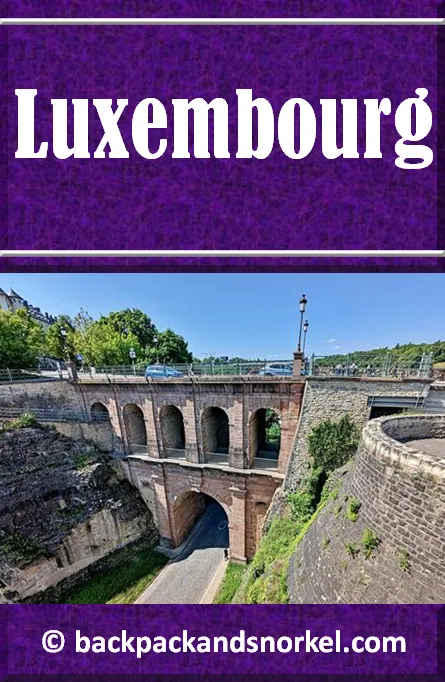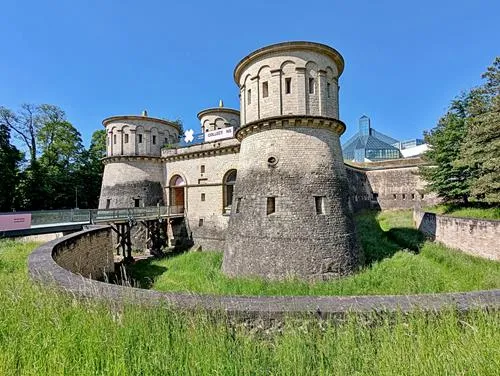Self-guided Walking tour of Ville-Haute in Luxembourg City - Luxembourg Purple Travel Guide
Ville-Haute is the historic center of Luxembourg City and it has many of the major attractions of Luxembourg. We provide you a detailed self-guided walking tour with the best things to see and we show lots of photos so you know what you can expect.
This self-guided walking tour of Luxembourg City requires about 2 miles (3.2 km) walking, not counting the distances you walk in the museum and the casemates. You can start the tour at any point as it ends where it starts.
Ville-Haute is the part of Luxembourg City that is located on top of the rocky promontory (Bock Rock) that Count Siegfried acquired in 963.

It is important to note that today’s walking tour includes a guided tour of the Casemates (Pétrusse or Bock Casemates). The Pétrusse Casemates are open all year, but the Bock Casemates can be accessed only in summer. Since the Bock Casemates are the more popular of the two, tickets for the English tour may sell out. It is therefore advisable to purchase your admission tickets days or even weeks (in the high season) in advance. Admission to the casemates is only by guided tour and you need to make sure to adjust your itinerary so that you don’t miss your tour. The good news is that downtown Luxembourg is very walkable and the part of the city that we are visiting today allows you to reach the entrance to the casemates within a few minutes.
Much of downtown Luxembourg is a car-free zone. So, your best option is to come to downtown Luxembourg City with one of the free buses (or trains) or, if you have a car, you will either need to park at a paid parking lot outside the city center or at paid street parking near one of the attractions that we are going to see.
Here at Backpack and Snorkel Travel Guides, we typically promote self-guided walking tours.
But we realize that not everybody likes to walk by themselves in a foreign city. So, just in case that you rather go with ab guide: NO PROBLEM! Please see the free GuruWalk and paid Viator tours below.
free GuruWalk tours
paid Viator tours
General Information about Luxembourg |
Self-guided walking tour of Ville-Haute in Luxembourg City |
Self-guided walking tour from Ville Haute to Fort Thüngen in Luxembourg City |
Self-guided tour of Vianden Castle and Echternach in Luxembourg |
Grand-Rue
Grand-Rue is a popular east-west facing pedestrian-only shopping street in Luxembourg City’s historic district. You can find famous international brands, department stores, local artisan shops, banks, restaurants, and offices here.
The upper floors of most buildings are residential.
The Royal-Hamilius shopping center is located at the street’s western end and worth a visit.
Please be advised that nearly the entire center is a walking and shopping district, but Grand-Rue has the most high-end international brands.

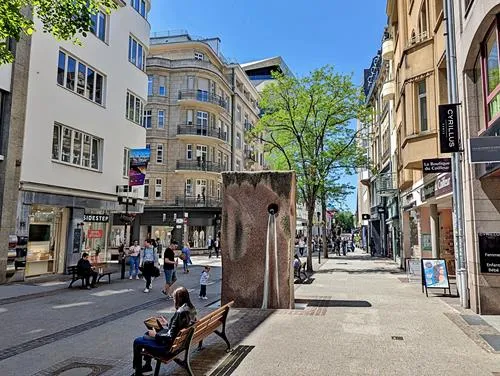
Dicks and Lentz Monument
The Dicks and Lentz Monument stands at the western end of the Place d'Armes in Square Jan Pallach. The monument was created by Pierre Federspiel and it commemorates Luxembourg's two national poets:
Edmond de la Fontaine (1823-1891), better known by his pen name: Dicks. Dicks was a Luxembourgian jurist, poet, and lyricist and is considered the national poet of Luxembourg.
Michel Lentz (1820-1893), who wrote the national anthem of Luxembourg.
At the top of the monument is a lion, which represents the Grand Duchy and at the bottom stands a blacksmith who symbolizes the steel industry.
The inscription on the pillar reads: Mir wëlle bleiwe wat mir sin (We want to stay what we are) is the national motto of the Luxembourgers. The phrase was coined in a patriotic song from Michel Lentz in 1859 called: De Feierwon. The song pays homage to Luxembourg's first cross-border railway.
The expression ‘Mir wëlle bleiwe wat mir sin’ came to symbolize the national awakening and consciousness of independence of Luxembourgers in the 19th century, which culminated in 1890 when the last step towards full independence was taken when Adolph of Nassau-Weilburg became the Grand-Duke of Luxembourg.

Place d'Armes
The Dicks and Lentz Monument stands at the very western part of Place d'Armes.
In 1671, Place d’Armes was built and originally used as a parade ground for the troops defending the city. Today, Place d'Armes is Luxembourg City’s main center of activity.
The large plaza that usually busy with people, and often has art or other exhibitions. You will see artisans selling their goods and likely street performers. Around the plaza, in historical buildings, are lots of cafes, restaurants and stores. The cafes and restaurants here are a bit more expensive than in other parts of the historic downtown area, but the flair cannot be matched by others. Restaurants and cafes have outdoor seating and we very much enjoyed watching people and having lunch, afternoon tea and dinner here, especially on warm summer days.
Music groups give concerts from the central bandstand on summer evenings. A flea market is held from 8am to 6pm every second and fourth Saturday, from April - October and in December, Place d'Armes houses the Christmas market.
The beautiful building on the eastern side of the plaza is Palais Municipal, also called Cercle. Originally designed as an administrative building with reception rooms, the main structure was completed in 1906 and the interior in 1909.
It was later used for the European Court of Justice and, since 1969, as a venue for celebrations and cultural events.
A plaque on the building commemorates the liberation of Luxembourg during the Second World War.
It reads:
On this square, on 10 September 1944 the people of Luxembourg warmly welcomed its liberators, the valiant soldiers of the US 5th Armored Division and their royal highnesses Prince Felix of Luxembourg and Prince John hereditary grand duke of Luxembourg.

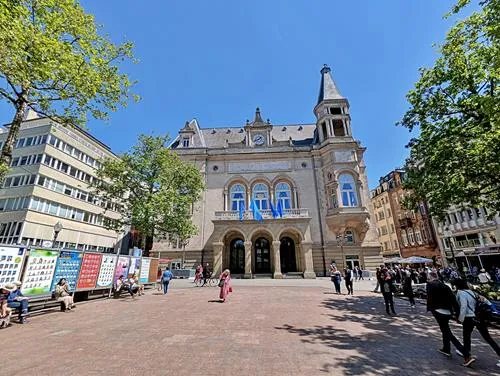
Place Guillaume II
Place Guillaume II is also known as ‘Knuedler’ (Luxembourgish for 'knot'), referring to the knot in the belt worn by Franciscan friars.
This is, because the plaza was originally occupied by a Franciscan monastery.
During the French Revolutionary Wars in 1795, the monastery was dispossessed French soldiers and later partially deconstructed. In 1804, Napoleon gave Place Guillaume II to the city as a gift.
Deconstruction was completed in 1829, and the new town hall (now Luxembourg City Hall) was built from 1830 - 1838 on the south-western side of the square, using the materials of the deconstructed monastery.
Place Guillaume II is typically not very busy, except for:
The farmers market takes place here Wednesdays and Saturdays from March through August from 6am to noon.
The Rock um Knuedler rock concert that takes place here once a year since 1991 and draws audiences up to 10,000.
December, when a Christmas market takes place in the square.
The Luxembourg Tourist office is located on the western side of the plaza.
On the eastern side of Place Guillaume II stands the statue of Grand Duke William II.
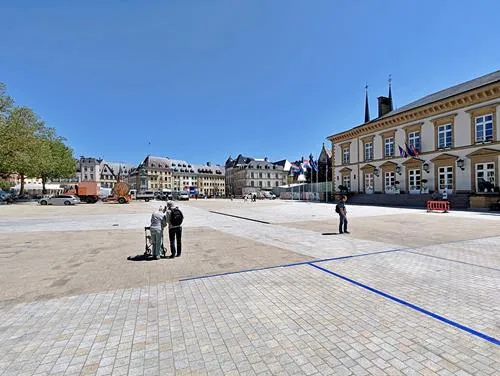
Grand Duke William II statue
The equestrian statue of Grand Duke William II is located on the eastern side of Place Guillaume II.
Grand Duke William II (1792 – 1849) of Luxembourg reigned from 1840 until his death. Fearing the democratic revolutions of 1848 in Europe would endanger his reign, he ‘changed from conservative to liberal in one night’ and appointed a liberal committee to create a new constitution. He believed that it was better to allow reforms instead of having them imposed on him later on less favorable terms.
The new constitution passed the governing power to the Tweede Kamer (House of Representatives, which is elected by the public), making the king a servant of government.
The constitution was amended multiple times later, but is still in effect today. At the time it was passed, it was the most liberal constitution in the world.
The base of the monument contains the coats of arms of the House of Orange-Nassau and the City of Luxembourg and the twelve cantons of the Grand Duchy.
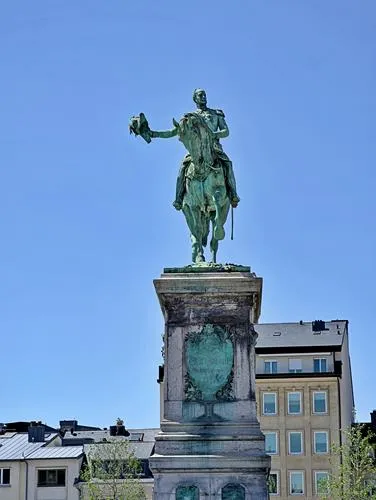
Luxembourg City Hall / Hôtel de Ville
This two-story building in neoclassical style houses the government of Luxembourg City, the private office of the Mayor of Luxembourg City and is regularly used to host foreign dignitaries.
It stands on the site of a former monastery of Franciscan monks, which was seized by the French army in 1795 and then deconstructed to build Place Guillaume II in 1804 and later the Luxembourg City Hall from 1830 - 1838.
The City Hall opening ceremony had to wait until 1844, because the ongoing Belgian Revolution prevented the King-Grand Duke William II from attending. In 1844, William II finally led the City Hall opening ceremony and also the unveiling of the equestrian statue to himself.
The building was first used as the seat of the city council. In 1848 it hosted the Constituent Assembly which wrote the new national constitution.
In 1938, the two lion sculptures, which flank the entrance, were added. They represent the city of Luxembourg, as reflected on its coat of arms.
During World War II, German occupiers converted the basement from market halls into offices, greatly increasing the amount of office space in the building.

Gëlle Fra - Monument of Remembrance on Constitution Square
The Monument of Remembrance, also called ‘Gëlle Fra (Luxembourgish for Golden Lady) is located in Constitution Square.
Constitution Square is located on an ancient Bock bastion, the Pétrusse Casemates, overlooking the Pétrusse River and Pétrusse Park in the valley below.
Built in 1923, the memorial commemorates the thousands of Luxembourgers who volunteered for service during World Wars I and II.
The centerpiece of the monument is a 69 ft (21 m) tall granite obelisk with a gilded bronze statue of Nike, the goddess of victory, on top holding out a laurel wreath as if placing it upon the head of the nation.
When Germany occupied Luxembourg during the First World War, approx. 3,700 Luxembourgers volunteered to fight in the French army against the invaders, of which over 2,000 lost their lives. The monument was created to honor their courage and sacrifice.
The monument caused public controversy at the time it was proposed and installed in 1923, leading the Grand Duchess Charlotte and the Bishop of Luxembourg to skip the inauguration ceremony.
The Nazis dismantled the monument in 1940, but several portions of the memorial were rescued. After the war, the monument was partially restored, but it took until 1980 until the Gëlle Fra was found hidden beneath the main stand of the national soccer stadium.
Later, additions to the memorial were made to honor Luxembourger forces who fought in World War II and the Korean War.
In 1984, the monument was finally restored and unveiled to the public in 1985 in the presence of Grand Duke Jean on Luxembourg's national holiday (June 23).
Constitution Square is located above the Pétrusse Casemates and the entrance to the Pétrusse Casemates is located here. The square has great views over the river valley, Parcs de la Pétrusse, Garden Luxembourg, the Adolphe Bridge, and the Passerelle Bridge.



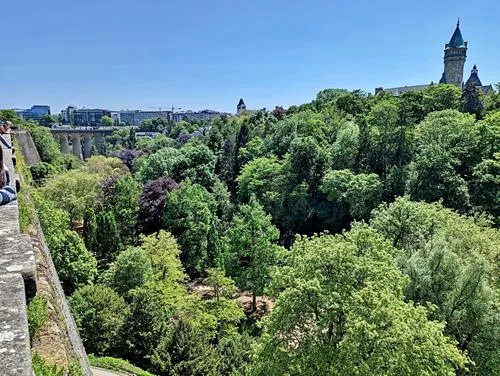
Pétrusse Casemates
The Pétrusse Casemates and Bock Casemates are medieval fortifications that were built into the hillside side of the Bock Rock on which historical Luxembourg City is built.
There is no need to see the Pétrusse Casemates and the Bock Casemates – you can decide which one you are more interested in seeing.
Admission to the Pétrusse Casemates is by guided tour, only. Tours are available year-round, but there are only two daily tours in English (12:30pm and 3pm at the time of writing). They start at the downward stairs near the souvenir shop at the northern end of Constitution Square and last approx. 45min.
At the time of writing, tickets cost €15 per adult and discounts are available for children, seniors, and students. Tickets can be bought online and at the tourist office at Place Guillaume II. No tickets are sold at the entrance to the Pétrusse Casemates.
Since English tours may sell out, it is advisable to buy tickets online days or weeks before the tour.
The first casemates in Luxembourg City were built in 1644 by the Spanish in their effort to improve the fortifications of the city. The part of the casemates that is known today as Pétrusse Casemates got its present shape 40 years later.
In 1745, the Austrians built what is today known as the Bock Casemates, which were 360 ft (110 m) long and 23 ft (7 m) wide.
At their peak, there were 14 miles (23 km) of casemates on multiple levels, up to 131 ft (40 m) deep.
The Bock Casemates held up to 1.200 soldiers and 50 canons.
After the Treaty of London in 1867, Luxembourg’s fortifications were largely dismantled and most of the entrances to the casemates were bricked up and about 3.7 miles (6 km) of the casemates were destroyed.
In the 19th century, the remaining casemates were used as storage for local companies, shooting ranges and to grow mushrooms and in the early 20th century, concerts and bazaars were held here.
During both world wars, the Bock and Pétrusse casemates were used as shelters. Your tour guide of the Pétrusse Casemates will point this out to you.
The fortifications of the city of Luxembourg and its old quarters were added to the UNESCO World Heritage list in 1994.


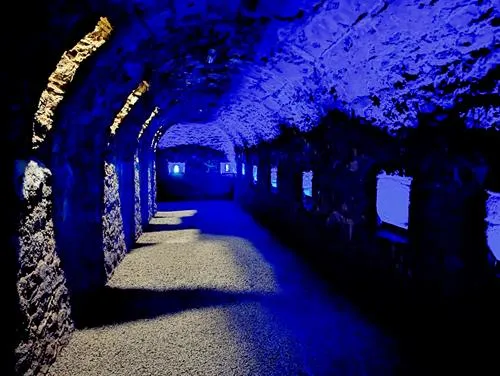
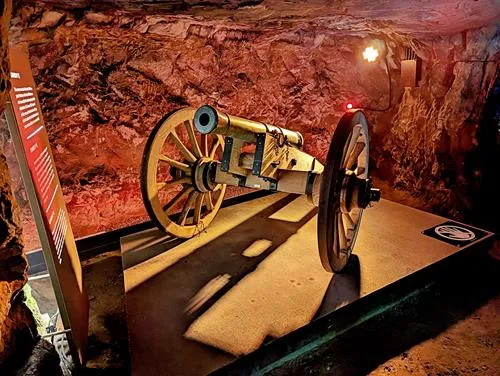
Please be advised that the tour does not end where it started. You will be exiting the Pétrusse Casemates a few hundred feet to the south-west on a lower level of the corniche. At the exit, turn left (east) and go up the stairs. At the end of the stairs, turn left (west) and follow the path along the casemate’s walls.
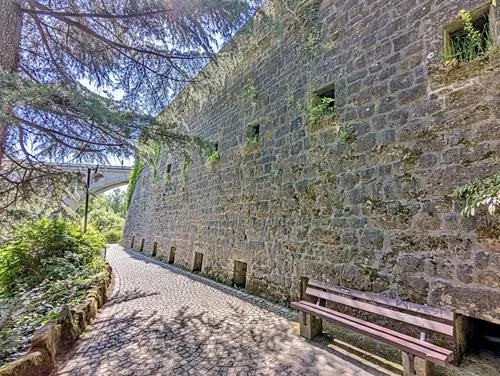

You will soon see Pont Adolphe Bridge.
Pont Adolphe Bridge
You will arrive at the bottom of the bridge. Right behind the bridge is a path that leads up to the top of the bridge. Go up one level (not all the way to the top!) until you reach the pedestrian and bicycle entrance of the bridge and take the special path that was built for pedestrians and bikes.


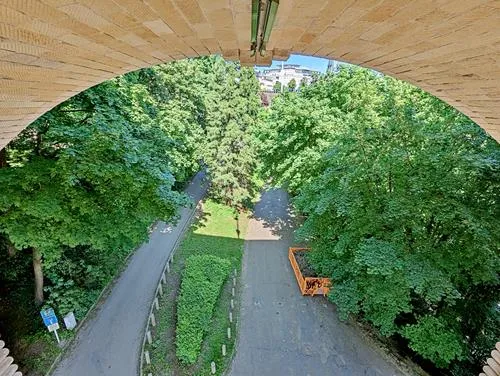
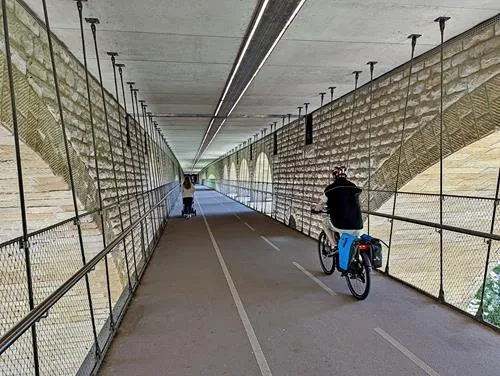
Now go back to the entrance of the bridge and follow the path up to Boulevard Franklin Delano Roosevelt in Ville-Haute.
Boulevard Franklin Delano Roosevelt
Walk eastwards on Boulevard Franklin Delano Roosevelt towards the Gëlle Fra monument and pass it until you get to the Notre Dame Cathedral. While you are walking along the boulevard, marble at the great views over the valley.


Cathédrale Notre-Dame
Opening Hours: Daily from either 8am or 9am until either 6 or 7pm, depending on the day and month
Admission: Free
Construction of the originally Jesuit church started in 1613 and consecration was in 1621. It was built to serve the local Jesuit college.
The Jesuits left Luxembourg in 1773, and the church was gifted to the city of Luxembourg in 1778. The church was given the name ‘Notre-Dame’ in 1848, and in 1870, Pope Pius IX elevated the church to the Notre-Dame Cathedral.
From 1935 – 1938, the cathedral was enlarged and expanded, and the east and central towers were added to the original west tower.
On Good Friday of 1985, work on the roof caused the west tower to catch fire. The West Tower collapsed and its bells (Virgin Mary bell, Willibrord bell, Peter bell, Cunigunde bell) were destroyed in the fire. It took 6 months to repair the tower.
The following people are interred in the cathedral’s crypt that is open to visitors:
John the Blind (1296–1346)
Marie-Adélaïde, Grand Duchess of Luxembourg (1894–1924)
Marie Anne, Grand Duchess of Luxembourg (1861–1942)
Felix, Prince of Bourbon-Parma (1893–1970)
Prince Charles of Luxembourg (1927–1977)
Charlotte, Grand Duchess of Luxembourg (1896–1985)
Joséphine Charlotte, Grand Duchess of Luxembourg (1927–2005)
Jean, Grand Duke of Luxembourg (1921–2019)
The north gate is built in semi-Renaissance & semi-Baroque style, the choir screen in richly sculpted alabaster and the columns are decorated with arabesques. The beautiful stained-glass windows are from the 19th and 20th centuries.
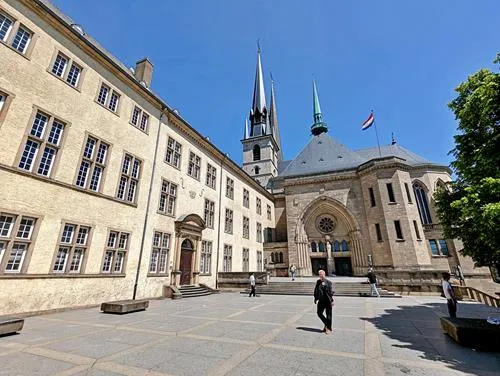

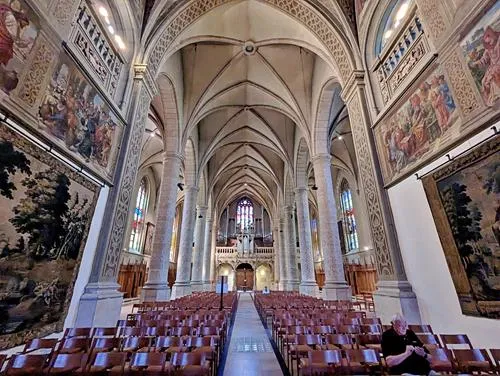

Statue of Charlotte
The 9 ft (2.7 m) statue of Grand-Duchess Charlotte stands in the Place Clairefontaine, next to the Ministry of Foreign Affairs. It was designed by Parisian sculptor Jean Cardot and inaugurated in 1990.
Charlotte, who was one of the most beloved and admired leaders of Luxembourg, reigned from 1919 to 1964.
She took over the reign from her older sister, Marie-Adélaide, after she was forced to abdicate due to accusations of being too friendly to the occupying Germans during World War I.
During World War II the grand ducal family fled Luxembourg shortly before the arrival of Nazi troops.
When the Germans proposed to restore the Grand Duchess to her functions, Charlotte refused as she did not want to be accused of being too friendly to the Germans, as her older sister had.
In 1940 Grand Duchess Charlotte started making supportive broadcasts to her homeland using the BBC from London and in 1943 she and the Luxembourg government established themselves in London and her broadcasts became a regular part of the BBC schedules, which established her as a focus for the resistance movements in Luxembourg.
After the war, Charlotte was very active raising Luxembourg's profile on the international stage.
On 12 November 1964, she abdicated in favor of her son Jean. Charlotte died at Schloss Fischbach in 1985 from cancer. She was interred in the Ducal Crypt of the Notre-Dame Cathedral in Luxembourg City.
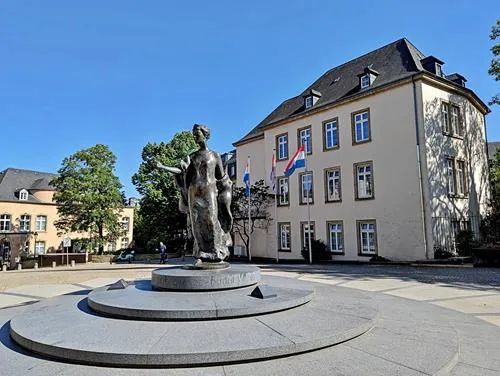
Palais Grand-Ducal
Access by guided tour only from mid-July through the end of August or early September. English tours usually at noon and 4pm.
Tours last 75 min and start at the Luxembourg City Tourist Office, Place Guillaume II.
Admission: 15€ per adult, discounted tickets for children.
Palais Grand-Ducal is the official residence of the Grand Duke and Duchess of Luxembourg.
The first town hall of Luxembourg City, which stood on this site, was destroyed by a gunpowder explosion in 1554 and rebuilt from 1572 - 1575. The new building served as town hall until 1817, when the palace was used as the residence of the Governor, who represented the Dutch Grand Dukes.
With the accession of the House of Nassau-Weilburg to the throne in 1890, the palace has served as residence of the Grand Duke and their families.
During the German occupation during World War II, the Nazis used the palace as a tavern and concert hall. Much of the interior decorations were stolen or ruined.
Grand Duchess Charlotte returned to the palace in 1945 and restored it. In 1960, she supervised a thorough redecoration. The palace was again restored from 1991 - 1996. To match modern tastes and comfort standards, regular updates are done.
When you get to the palace, you will see soldiers of the military of Luxembourg perform guard duties at the entrance. They do it since 1966. From 1945 – 1966, this duty was performed by the Grand Ducal Guard.
Foreign heads of state are housed at the palace during official visits to Luxembourg. State banquets for the guests are held at the Ballroom and the annual New Year's reception is given here for members of the Government and the Chamber of Deputies. The Grand Duke delivers his Christmas Message every year from the Yellow Room.

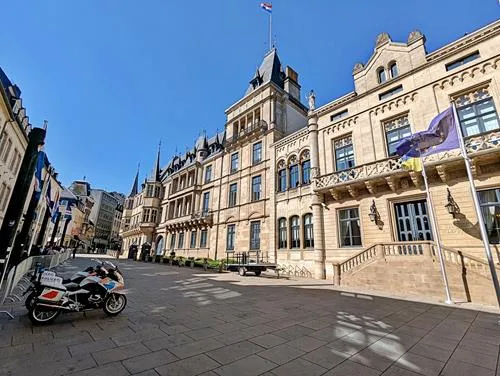
This concludes your first day itinerary of Luxembourg City. Now walk north on Rue du Marché-aux-Herbes to Grand-Rue and then westwards to the starting point of your itinerary.
If you still have time, then we recommend to leisurely stroll along Chemin de la Corniche and maybe eat dinner at Place d'Armes.
Where do you want to go now?
Author: Rudy at Backpack and Snorkel
Bio: Owner of Backpack and Snorkel Travel Guides. We create in-depth guides to help you plan unforgettable vacations around the world.
Other popular Purple Travel Guides you may be interested in:
Like this Backpack and Snorkel Purple Travel Guide? Pin these for later:

